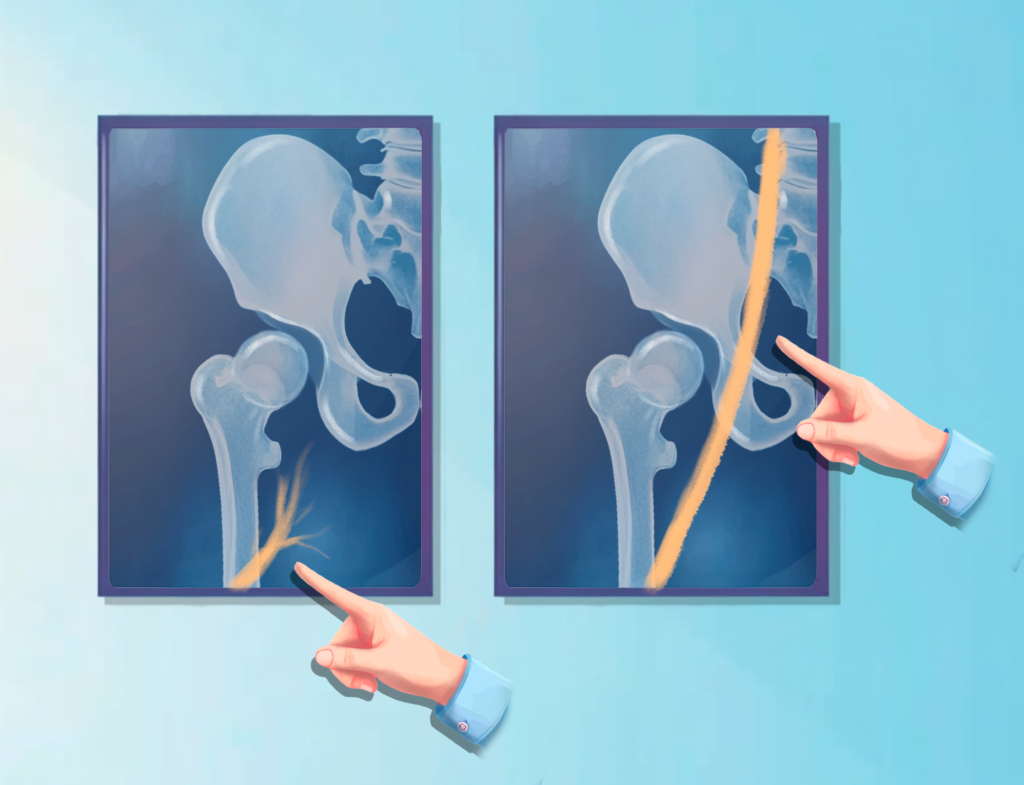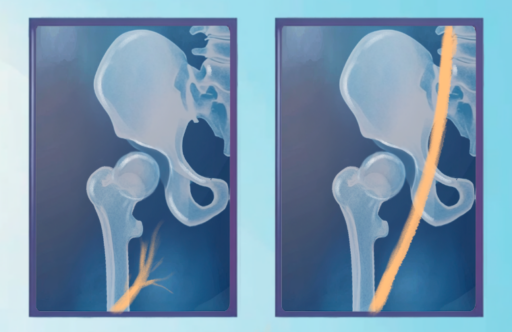Have you been dealing with chronic pelvic pain that just won’t go away? You’re not alone! Many women suffer from a condition called pelvic venous disease (PeVD), and one possible cause could be something called iliac vein obstruction. If you’ve never heard of this, don’t worry—I’ll explain what it is, how it can cause pain, and when a treatment called stenting might be right for you.
What is Iliac Vein Obstruction?
The iliac veins are large veins in your pelvis that help carry blood from your legs back to your heart. Sometimes, these veins can become compressed or blocked, which slows down blood flow and creates pressure. This pressure can cause symptoms like pain, heaviness, and swelling in your legs or pelvis.
While you might have heard of iliac vein obstruction causing leg pain or swelling, it can also lead to chronic pelvic pain. This happens because the blocked vein creates extra pressure in the pelvic veins, leading to a condition called venous hypertension. Essentially, your veins in the pelvic area are working overtime, and it hurts!
What are the Symptoms?
If you’re wondering whether iliac vein obstruction could be causing your pain, here are some symptoms to look out for:
- Pelvic pain that feels heavy or achy, often worse at the end of the day.
- Leg swelling or a feeling of heaviness in your legs.
- Varicose veins in unusual places, like around the buttocks or thighs.
- Pain that doesn’t improve with medication or other treatments.
If these symptoms sound familiar, it’s time to talk to your doctor about iliac vein obstruction and whether stenting could help.
How Do Doctors Diagnose Iliac Vein Obstruction?
Your doctor will likely use imaging tests like an ultrasound, CT scan, or MRI to get a good look at your veins. These tests help show whether there’s any blockage in the iliac vein that might be causing your symptoms.
But the gold standard for diagnosing iliac vein obstruction is called intravascular ultrasound (IVUS). This special test allows your doctor to see inside the vein and measure how much it’s blocked. If the obstruction is significant, they may recommend stenting as a treatment.
What is Stenting?
A stent is a small, mesh-like tube that your doctor places inside the blocked vein to keep it open and improve blood flow. The procedure is minimally invasive, meaning it’s done through a small incision, and you can usually go home the same day.
Here’s what happens during the procedure:
- The doctor makes a small incision, usually in the groin area, and guides a tiny tube called a catheter to the blocked vein.
- The stent is placed inside the vein to hold it open, allowing blood to flow more freely.
- Over time, the stent helps reduce pressure in the pelvic veins, which can lead to significant pain relief.

When Should You Get a Stent?
Stenting isn’t for everyone with pelvic venous disease, but it can be a good option if:
- You have chronic pelvic pain that’s affecting your quality of life.
- You’ve tried other treatments without success.
- Your doctor confirms a significant iliac vein blockage through imaging tests.
It’s important to note that stenting is a permanent solution, so your doctor will only recommend it if they’re confident it’s the best way to relieve your pain.
Final Thoughts
If you’ve been struggling with chronic pelvic pain and other treatments haven’t worked, it’s worth talking to your doctor about iliac vein obstruction and stenting. This minimally invasive procedure has helped many women get back to living pain-free lives, and it could be the answer you’ve been looking for!




